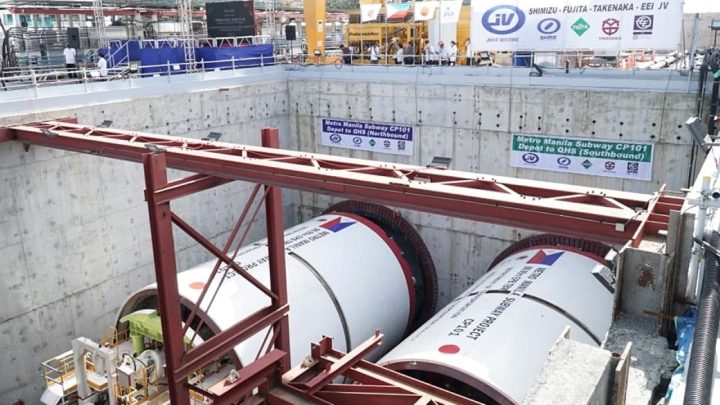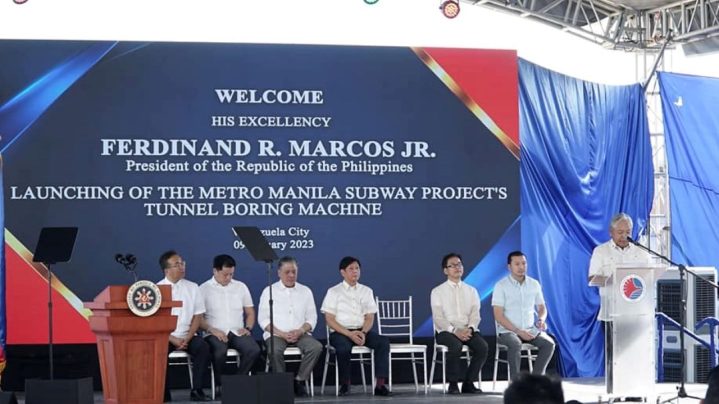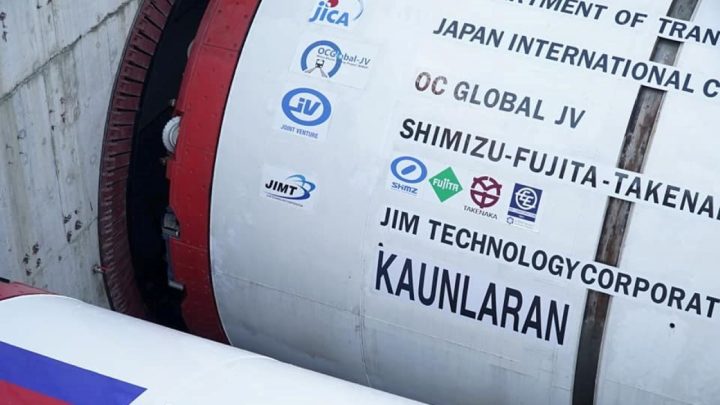
Late last year, parts of Meralco Avenue were closed to make way for the Metro Manila Subway Project (MMSP). The Department of Transportation released a statement yesterday that the project has reached the point of no return, and that agency is going “full speed ahead” with its construction.
Metro Manila Subway Project to cover 33 kilometers through 13 stations

Photo: DOTr
It’s not just the Pasig-Mandaluyong area that has, or will see closures during the MMSP’s construction. Yesterday, January 9, 2022, saw the launch of the first tunnel boring machines (TBM) that will begin the excavation of the subway tunnel in Valenzuela. During the ceremony, DOTr Secretary Jaime Bautista said, “Today’s start of tunneling work signifies the point of no return. We are going full speed ahead to complete the country’s first subway.”
Following the deployment of the TBMs, the actual construction of the subway will commence as “it will set in motion the operation and initiate its movement for excavation”. A total of six TBMs will be put to use and will use what is called a top-down method in constructing the subway stations.

Photo: DOTr
The addition of a subway for mass public transportation is seen to help alleviate the congestion of roadways in Metro Manila. That said, Secretary Bautista stressed the value of interconnectivity of the country’s various transport infrastructures and said that there is an “urgent need” to provide a railway station at the Ninoy Aquino International Airport (NAIA) in the wake of the holiday rush.
The government is likewise grateful to its partner, Japan International Cooperation Agency, for helping fund the MMSP.
“Let me reiterate my gratitude to our financial partner – the Japan International Cooperation Agency or JICA. Your faith in this project inspires us to work harder … to work smarter. We will ensure JICA’s financial assistance to this P488.4-billion project will result to a world-class subway system,” Bautista stated.

Photo: DOTr
Dubbed the “Crown Jewel” of the Philippine mass transportation system, the MMSP will cover 33 kilometers and will have stations spanning from Valenzuela City to FTI-Bicutan in Paranaque, with a spur line that connects to NAIA Terminal 3 in Pasay. It is seen to service up to 519,000 passengers daily and aims to cut travel time between Quezon City to NAIA from 1 hour and 10 minutes to just 35 minutes once it becomes operational.
While we don’t have further updates on road closures and rerouting in cities that will be affected by the MMSP, we do have one for Meralco Avenue, and you can refer to it here so you won’t be caught unaware as a private motorist or as a commuter.
Many first-world countries rely heavily on subways for mass transport, and if anything, the DOTr is aiming very high for the Philippines’ commuting public with the MMSP. Yes, its construction will inevitably cause traffic in different areas as it moves along, but future generations will undoubtedly benefit greatly from it. Possibly, us, too, if “full speed ahead” moves speedily enough. And that is a good thing!



It’s about time that NAIA had a train station like all other airports in Asia .
Manila needs to speed up entry to platforms and trains hopefully faster than MRT LRT is at present.